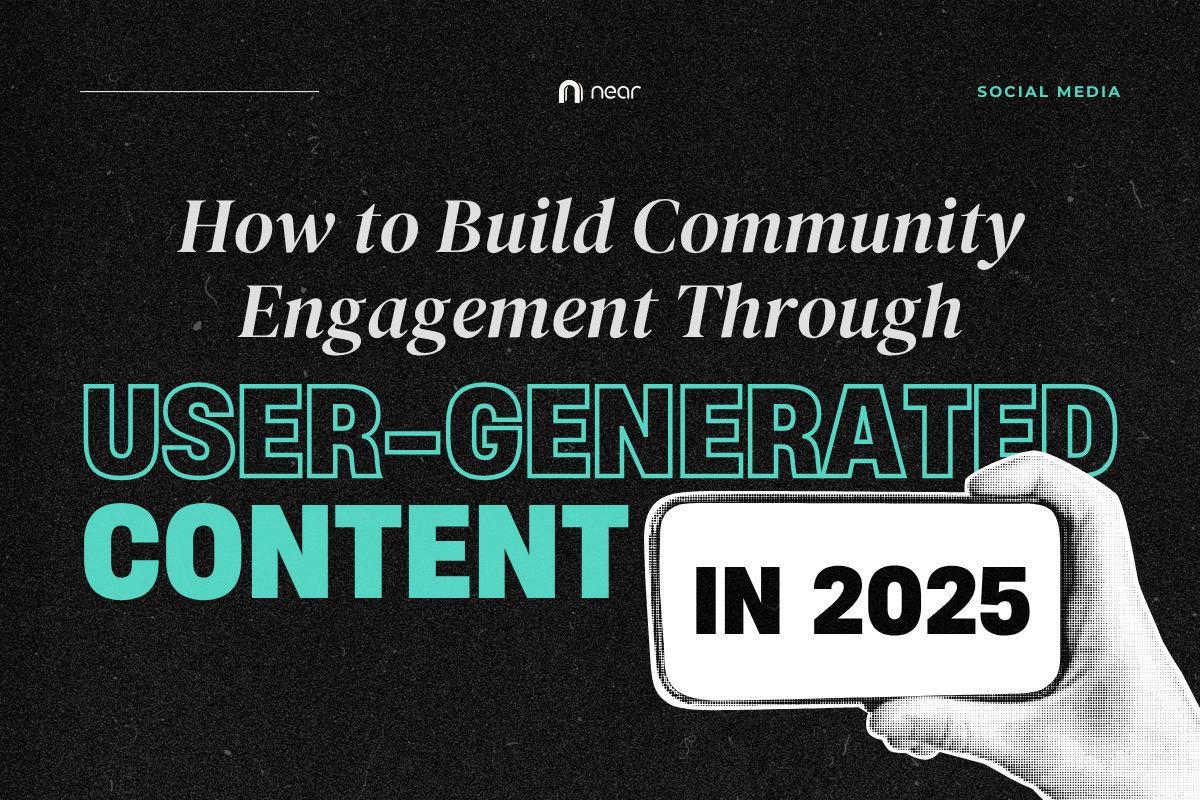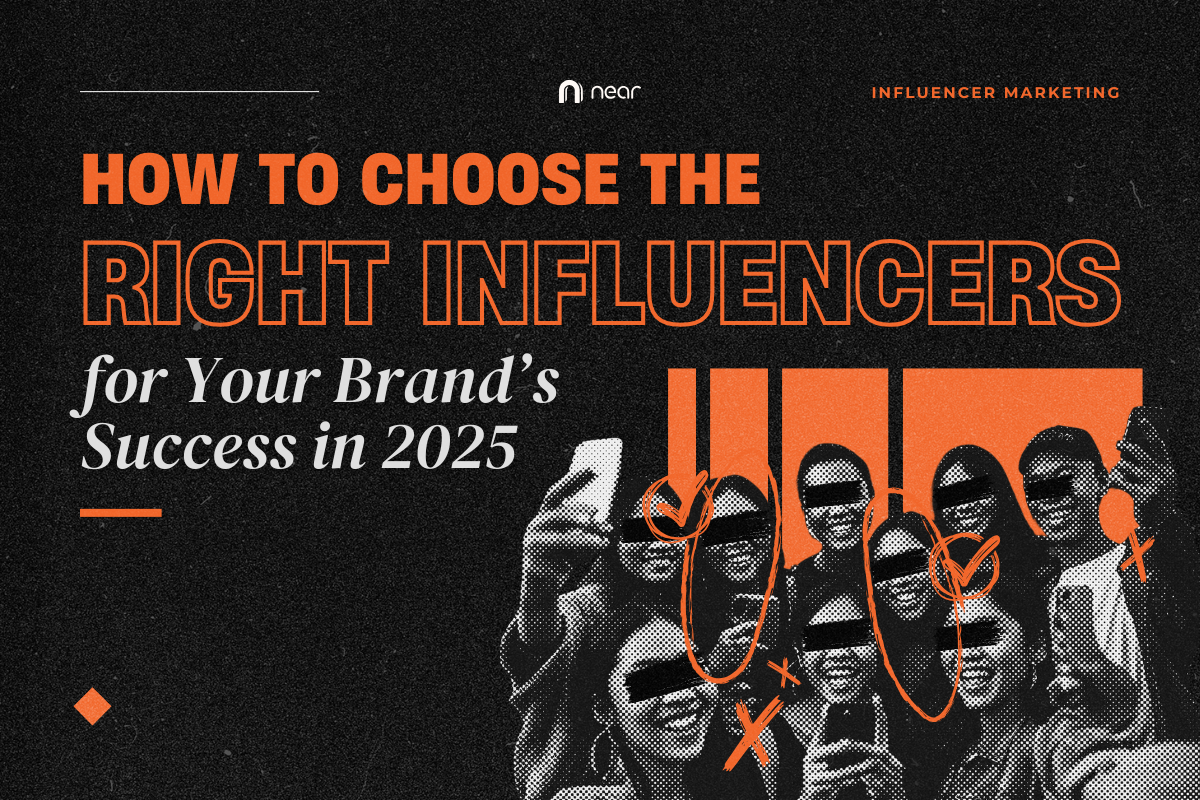View By Date
- December 2025 1
- November 2025 2
- October 2025 3
- September 2025 2
- August 2025 2
- July 2025 2
- June 2025 2
- May 2025 3
- April 2025 2
- March 2025 3
- February 2025 1
- January 2025 1
- November 2024 1
- September 2024 1
- July 2024 1
- May 2024 3
- April 2024 1
- March 2024 1
- February 2024 2
- January 2024 2
- August 2023 1
- July 2023 1
- June 2023 2
- May 2023 3
- April 2023 4
- January 2023 2
- November 2022 1
- September 2022 3
- June 2022 1
- December 2021 1
- November 2021 4
- October 2021 2
- September 2021 1
- January 2021 1
View By Category
How to Build Community Engagement through User-generated Content in 2025
How to Build Community Engagement through User-generated Content in 2025
In 2025, there are only two ways that a brand is interacting with user-generated content (UGC): either they are leveraging it to build their brand presence or completely missing out on its benefits.
And every marketer knows that missing out on what is relevant is a step towards failing with your marketing strategy. No one wants that. We all want to create marketing campaigns that meet our KPIs, if not completely exceed them! Now, how can we do that on social media this year? Community engagement through UGC.
Here’s how to properly make use of UGC to build and engage an online community:
1. Bring in a sense of belonging.
A community is a space in which people know they belong. That means your brand should encourage interaction and connection for a real, vibrant community to thrive on social media, which you can accomplish through UGC.
Why UGC? Although influencer marketing has its unique place in your marketing strategies, trust is not built with an army of flashy KOL content alone.
It can be as simple as resharing an Instagram story a happy customer tagged you in, or keeping a highlight on your page dedicated to customers talking about their experiences. Acknowledge posts through likes, comments, and community spotlights on your pages so they know their trust in your brand matters.
If you need a reference, many beauty brands today do this! One example is about-face by Halsey. The brand’s Instagram Stories are riddled with makeup looks and tutorials by avid users. In addition to that, they also have carousel posts of “muses” using their latest products:
https://www.instagram.com/p/DJVKzZRxhS-/
2. Initiate avenues for interaction.
You can’t just wait for customers to make content about your brand before you take advantage of UGC. Start now by initiating a campaign that invites people to make content about your brand and share it.
For example, one of the ways Spotify Philippines promoted 2024 Wrapped was through its Branded Mission, a TikTok challenge that let users make a year-end recap video through a CapCut template the brand provided.
This gave Spotify users a chance to show off the highlights of their 2024, along with their 2024 Wrapped results, without having to do much editing. Personalization can encourage more interaction!
https://www.tiktok.com/@ckdeleon_/video/7444920087485746450
https://www.tiktok.com/@frnzchuaa/video/7444844382852844807
https://www.tiktok.com/@maybedrei/video/7445160150555462919
3. Tell your brand story through people.
It gets hard to constantly come up with creative content that reflects your brand story. With UGC, you don’t have to rely on your content plan alone to engage consumers.
Each user offers a different voice and perspective about your product, so let these differences make your content more dynamic and approachable.
https://www.tiktok.com/@dyson_ph/video/7495735012726230327
Dyson is known as a high-tech brand of hair and floor care products, but this UGC post communicates its unmatched tech by making it fun and relatable: a challenge that compares the speed of wet-to-dry straightening to a quick makeup routine.
Real-life uses, testimonials, and reviews are just some ways your brand can incorporate UGC in its storytelling. Let customers enrich your brand story through their words and experiences, and you can build an engaged community on mutual trust and appreciation.
Let UGC breathe life into your marketing strategy
UGC lets your marketing campaigns be more grounded, as they make your brand more accessible to its customers. Remember to foster a sense of belonging between customers, create opportunities for customers to interact with your brand, and to give them room on your social pages to tell your story on your behalf.
Want to make marketing campaigns that make a difference? Download our social media trends guide here.
How to Choose the Right Micro-Influencers for Your Brand’s Success in 2025
Here’s a blast from the past: remember the days when our social media feeds displayed content chronologically?
These days, whether you’re scrolling through Facebook, Instagram, or TikTok, you will see a feed curated according to your interests and preferences. Personalization is the name of the social media game, and it has brought about a shift in the influencer space. We are seeing an increasingly even playing field for content creators, in which micro-influencers (10,000 to 99,000 followers) are growing in prominence.
But while we’ve established that micro-influencers have great potential in promoting brands this year, you may be wondering how to approach this shift for your 2025 campaigns. Well, Near’s got you.
3 tips for finding the right micro-influencers
1. Take notes from your audience.
No marketing campaign can be successful without an understanding of the audience you’re marketing to.
If you want to find the right micro-influencers, you can start with your audience. Who are they following? Whose content do they interact with? What kind of content do these creators have? Finding the answers to these questions will already give you an idea of the right micro-influencers to tap because the answers will tell you about their interests, their pain points, and the niches they belong in.
Tapping a micro-influencer your audience already follows is a simple way to ensure that your campaign is a match.
2. Gauge the influencer’s authenticity.
There are simple ways to check if a micro-influencer will be a reliable partner for your campaign even before you contact them.
Just go on their social media profile and take a look at the following:
Content quality: Look at their posts. See if the content they create is well-made and executed, from the hooks and scripts to their filming and editing styles. They don’t need to have high production value, but they do need to be creative and offer something substantial to the viewer.
Previous posts: Branded or otherwise, their posts will tell you more about their interests and the kinds of products they gravitate towards. This will also give you an idea of what their audiences care about. Their existing posts are a good way to gauge if your product is something that could resonate with their audience or address a pain point they are experiencing.
Follower engagements: Micro-influencers tend to have more opportunities to interact with followers due to their smaller community and specific niche. You can tell if a micro-influencer has an engaged following if they respond to followers’ comments on their posts or if the followers themselves have discussions in the comments.
3. Make use of influencer discovery tools.
There is a wealth of influencer marketing platforms that can point you to different content creators in the Philippines. At Near Creative, in addition to our wide influencer database, we use these tools to enrich our influencer recommendations, as they are able to provide in-depth insights such as content niches, posting consistency and performance, average engagement rates, and even influencers in the same category. This way, we are able to refine our recommendations to ensure a brand fit for our campaigns.
These tools simplify and speed up the vetting process, while also ensuring the quality of content for the future.
Making memorable content with micro-influencers
Choosing the best micro-influencers is half the battle, but the other half is developing high-quality content that your target audience will watch.
Collaborate. An influencer is a partner; not simply a doer. This means that the final output must be the result of collaboration with them; you can guide them on the brand’s identity, while they direct on what content works best for their platforms.
Communicate. Be clear about what you need, when you need it, and how you need it. When everyone is on the same page, it will be a seamless experience from when you onboard an influencer to when they finally upload the content.
Cultivate. Build and nurture a relationship with your influencer partners. Getting to know them leads you to understand them better, which will help you create even better content for your future collabs!
So remember, in 2025, micro-influencers are key to social media success! Understand your audience, get to know your influencers, and employ appropriate tools to find the best recommendations. From there, three Cs: collaborate and communicate with your micro-influencer partners, then cultivate a relationship with them to ensure you create more great content and campaigns together.
Want to build an influencer strategy that works? Sign up for our webinar today!




